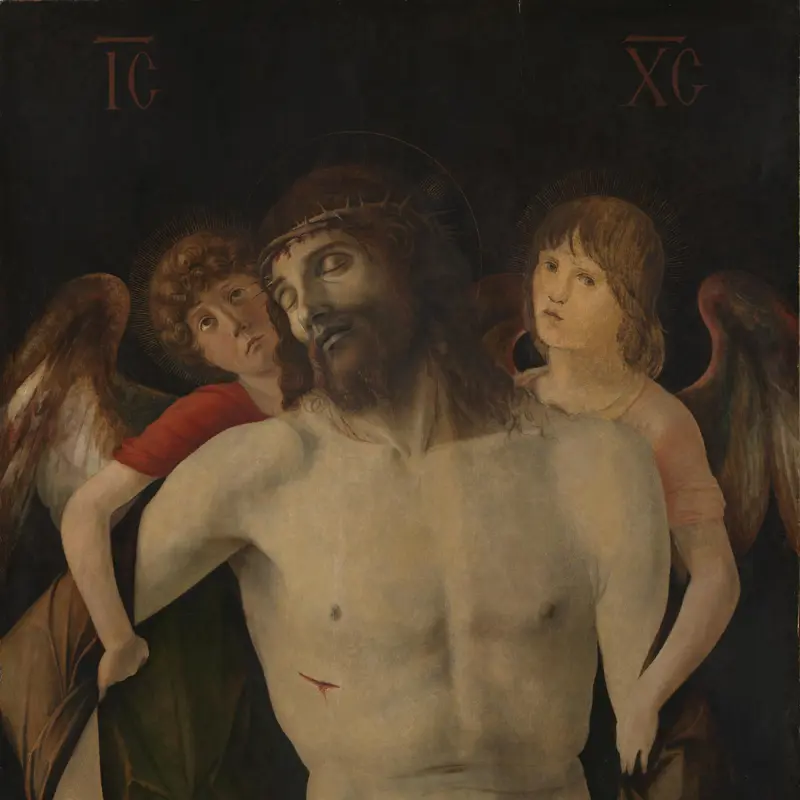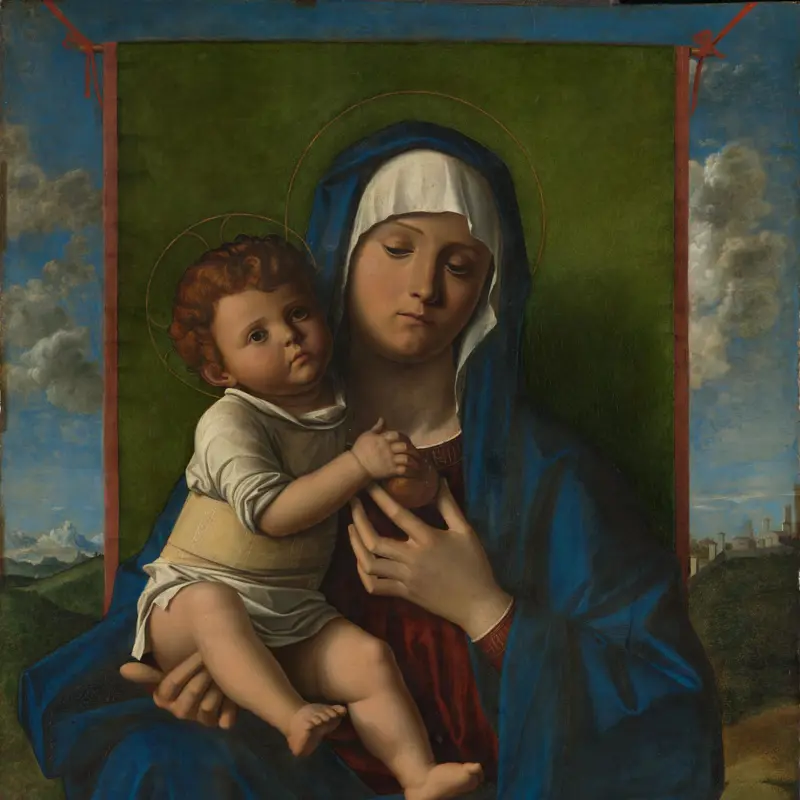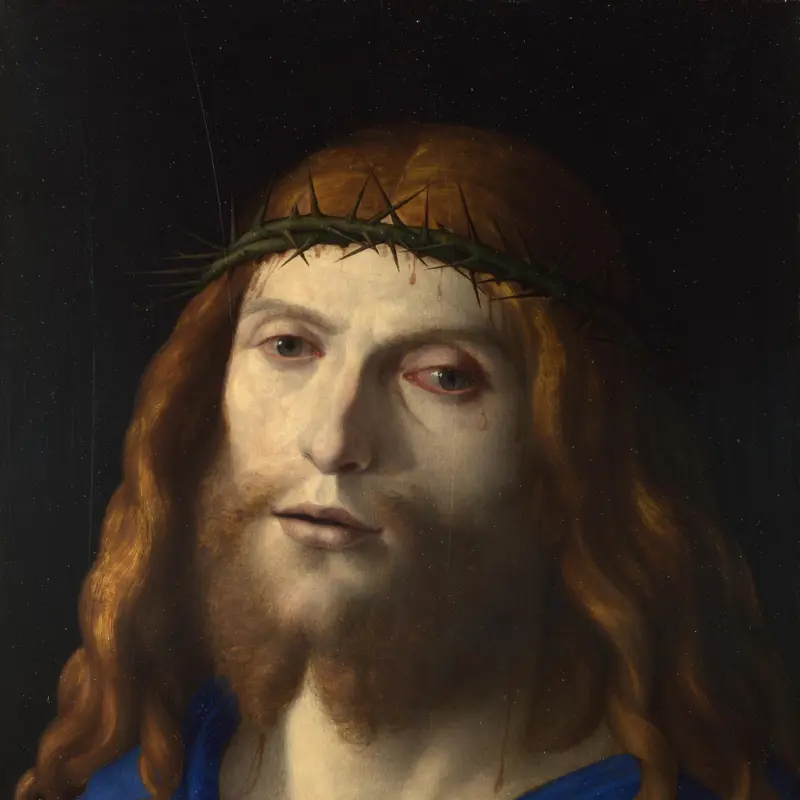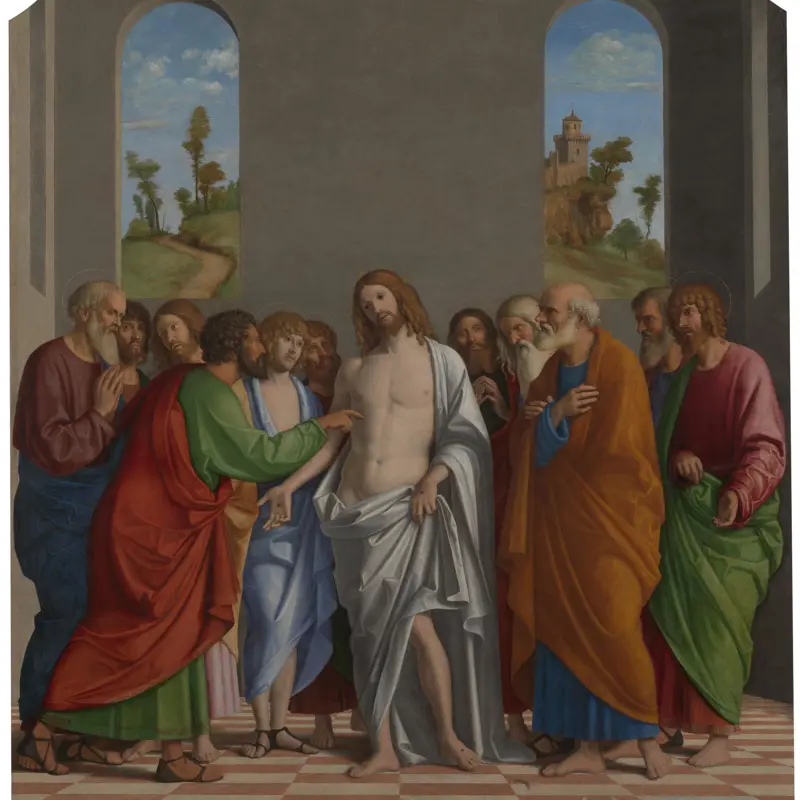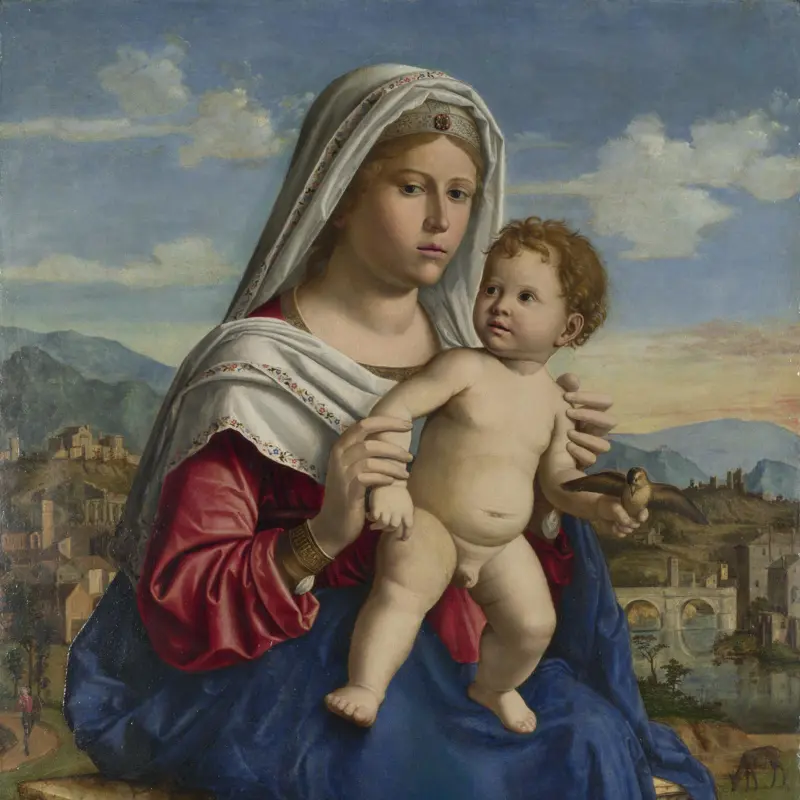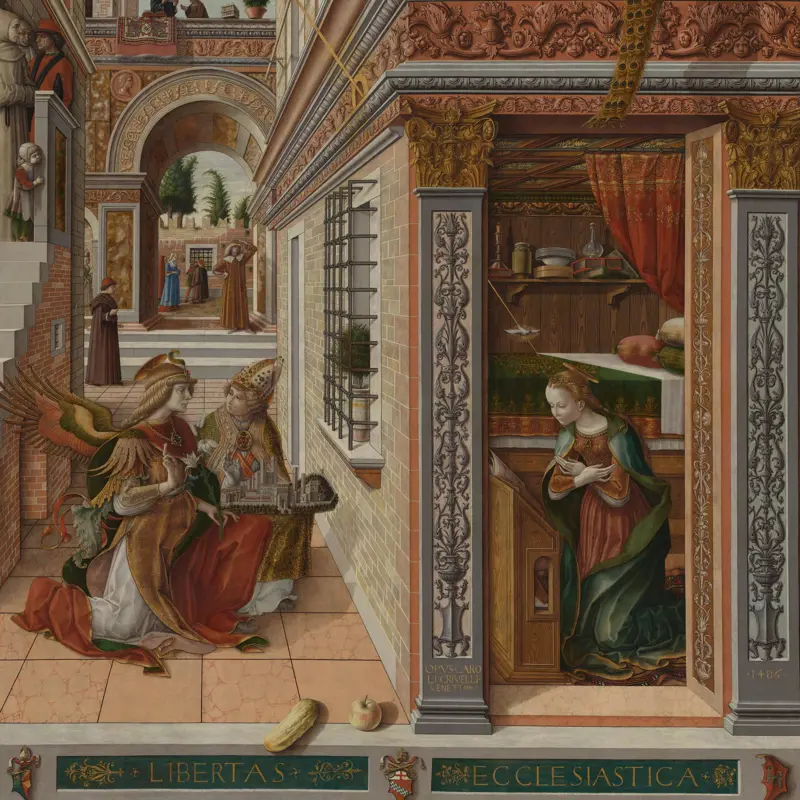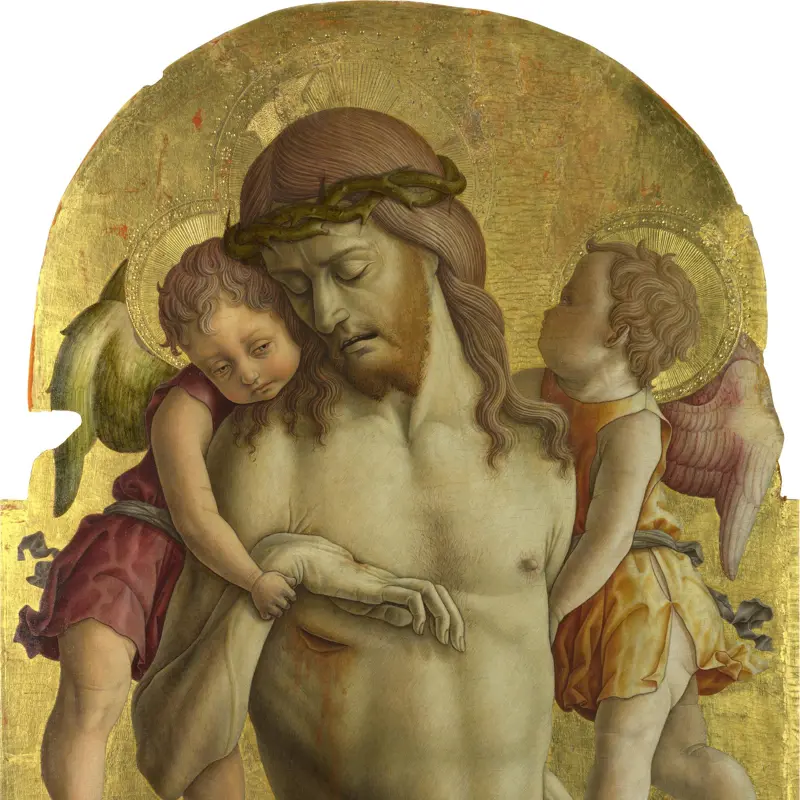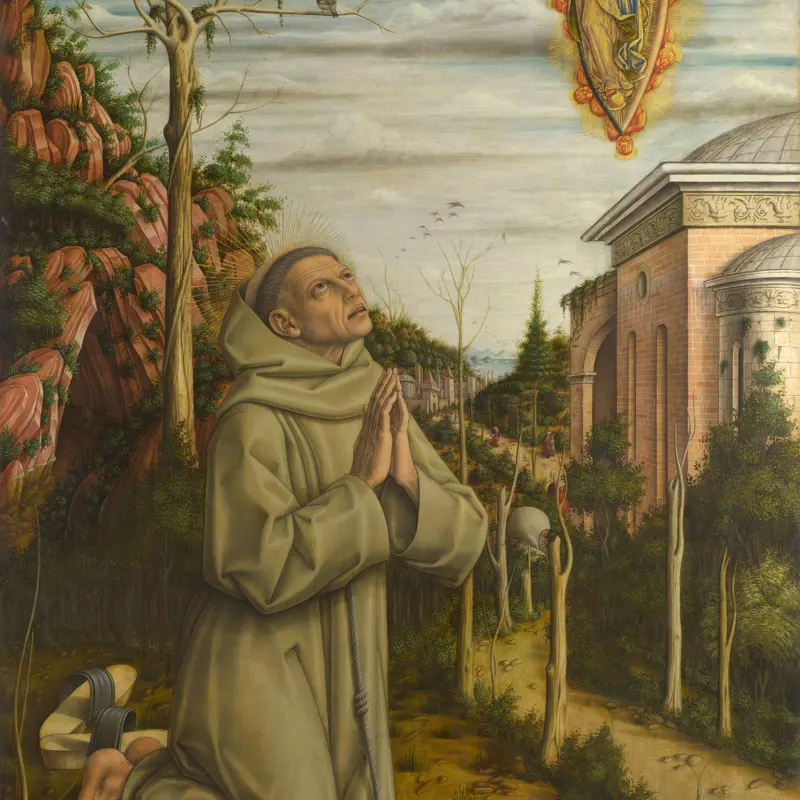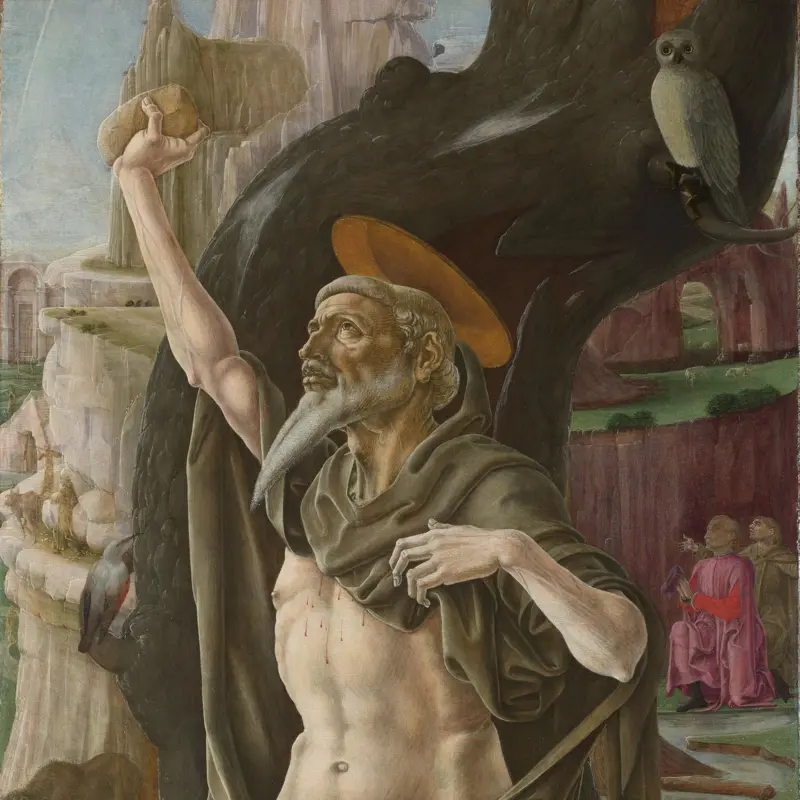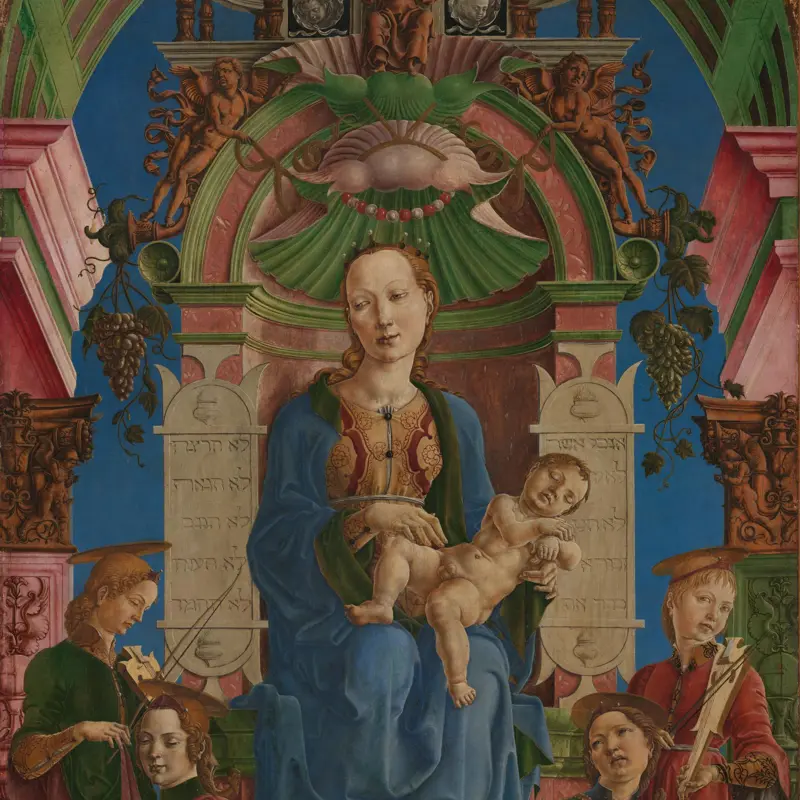In the decades before 1500, artists in Italy participated in contemporary debate about the relative value of painting and sculpture. This discussion was known as the paragone (comparison). How could painting represent three-dimensional objects in space? The works in this room present a variety of answers to that question.
Artists of all kinds looked to the art and architecture of the ancient world. The painter Francesco Squarcione ran a studio in Padua where young artists could learn from his collection of Greek and Roman statues. Carlo Crivelli, Mantegna and Cosimo Tura were among his pupils. Their paintings present architectural structures that are solid yet made of extraordinary materials. Marble, metalwork, wood, even a cucumber, are all represented with playful accuracy.
Cima da Conegliano’s altarpieces were made for patrons across the Veneto and beyond. In the Incredulity of Saint Thomas, the simple architectural setting draws our gaze to Christ’s idealised body. Distant landscapes strengthen the illusion of being close to the holy figures, who are located just the other side of a marble ledge.


